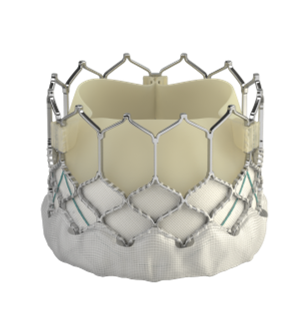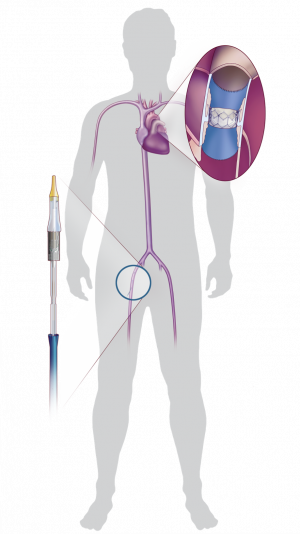TAVR
Transcatheter aortic valve replacement (TAVR) is a minimally invasive procedure to replace the aortic valve in patients with severe aortic stenosis, a narrowing of the aortic valve that restricts blood flow. Left untreated, aortic stenosis can result in many symptoms and even death. This state-of-the-art surgical procedure combines the expert skills of interventional cardiology and cardiac surgery with advanced imaging technology to replace damaged heart valves without opening the chest.
During the procedure, a tightly collapsed prosthetic valve is guided through an artery, typically accessed via small incision in the patient’s leg, to the heart. Once in place, the new valve is opened and the damaged valve is pushed aside. Once open, the new valve begins working immediately. The total surgery time is typically two hours or less and recovery generally takes a few weeks.
 What are the Benefits of TAVR?
What are the Benefits of TAVR?
TAVR often provides immediate relief of debilitating symptoms and helps patients live longer, more active lives. It can also allow for quicker recovery than traditional aortic valve replacement surgery.
Other benefits of TAVR may include:
- Improvement in common symptoms of aortic stenosis, such as shortness of breath, chest pain and fatigue
- Less pain
- Less blood loss
- Lower risk of cardiac and respiratory complications
- Fewer days in the ICU
- Shorter hospital stays
- Faster return to normal activities
To learn more about the procedure, watch the American Heart Association’s animation here.
 Am I a Candidate for TAVR?
Am I a Candidate for TAVR?
Currently, TAVR is approved by the Food and Drug Administration (FDA) for all patients with severe, symptomatic aortic stenosis, regardless of surgical risk. However, most TAVR patients are typically of advanced age or have other medical conditions, such as severe lung disease or prior open heart surgeries, which may interfere with recovery from an open heart procedure. Patients with low risk of complications are still treated with open heart surgery; however, due to its minimally invasive approach and outcomes, TAVR is expected to be the standard approach for valve replacement for all patients in the future.
The TAVR procedure may involve general anesthesia and is associated with specific contraindications as well as adverse effects. To see a full list of warnings and precautions, please visit SAPIEN3TAVR.com.
